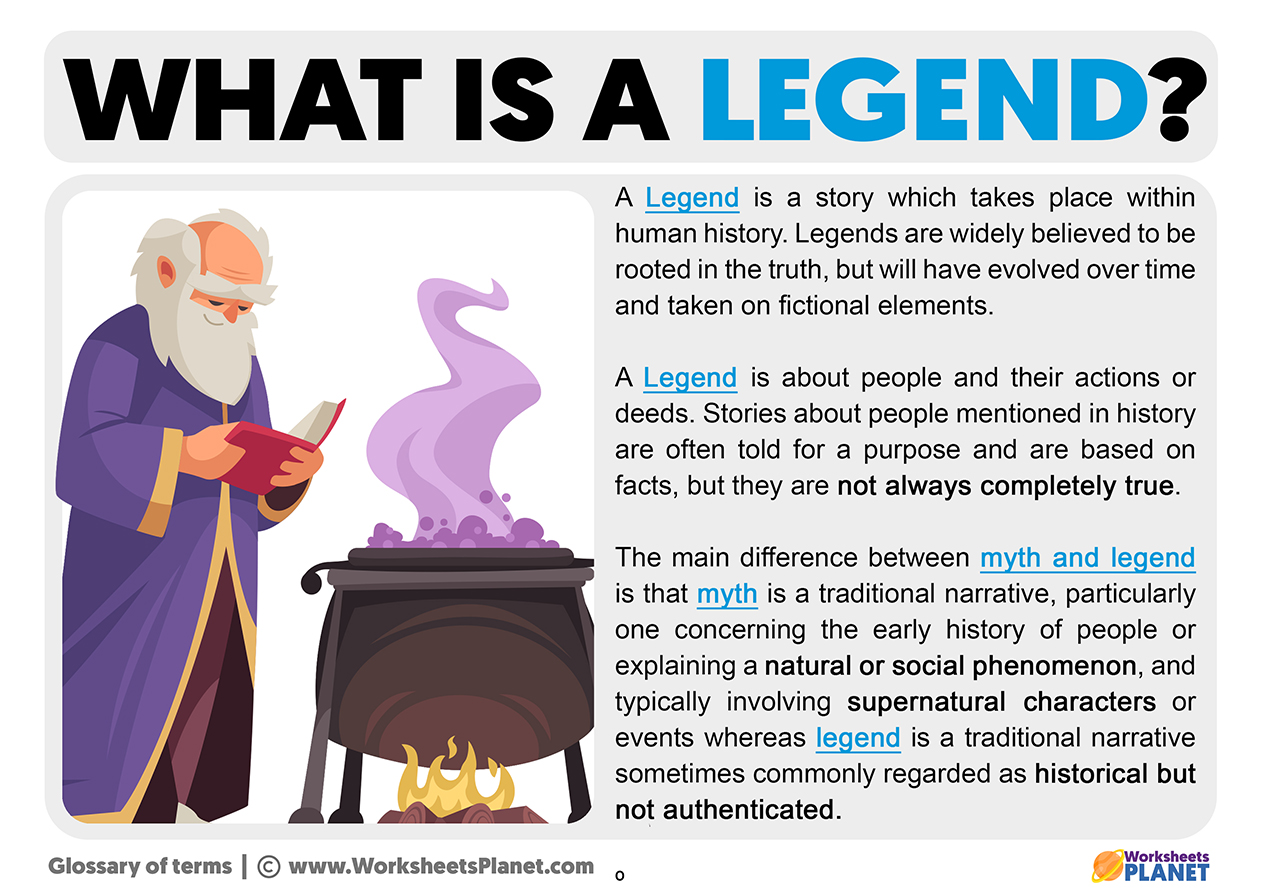A legend is a traditional narrative based on past events, places, or characters that take fantastic, imaginary, or supernatural elements. Legends are part of the cultural heritage of a society. They are transmitted orally from one generation to another, so they last over time, collecting values, customs, and traditions that mark the behavior of a community or region. This feature makes the original version of the story gets lost and adapts to the needs of people in the present.

Other characteristics of the legends have to do with the mixture of real and fantastic elements, explaining various natural phenomena, their ability to endure over time, their intention to guide people’s behavior, and the exposition of the history and customs of a community.
There are different types of legends according to their theme. They can be distinguished between historical, horror, religious or etiological legends. By their origin, they can be urban, rural, or local.
Characteristics of a legend
It is of oral tradition
These stories are anonymous and, since their origin, have been transmitted orally over time between generations, so they have undergone changes, and various elements have been integrated and vary significantly from their original version.
It uses description:
A descriptive story that details the main characteristics of the characters, spaces, time, and events. In this way, the listener can recreate the legend they were told.
Mix real and fantastic elements
The characters or events can be real, magical, fantastical, supernatural, or otherworldly. For example, the “Legend of the water” tells the story of a half-woman half-serpent goddess called Tlanchana.
It occur in a specific place
The story takes place in a specific and real place, so it can be a town, street, house, or forest, among others.
The events occur at a specific time
That is, year, century, night, or day, among others. For example, the Spanish legend of “The Lovers of Teruel” recounts the fateful love story between Juan Martínez de Marcilla and Isabel de Segura, which took place in 1217 year approximately.
It fulfills a social function
It seeks to guide the behavior and actions of people by sharing moral codes or ways of guiding individual behavior or social groups.
It contains a moral
The legend shows what a person is expected to do or not do and the result of such behaviors. It can reinforce positive social behavior.
Experience a distortion
Over time, the story undergoes changes that enrich, transform and modify it. It can even be kept in line with the current context. For example, the legend of “La Llorona” has different versions in Latin American countries without losing the central axis of the story, which is the soul in pain of a woman.
You also may be interested in “What is a Myth“

